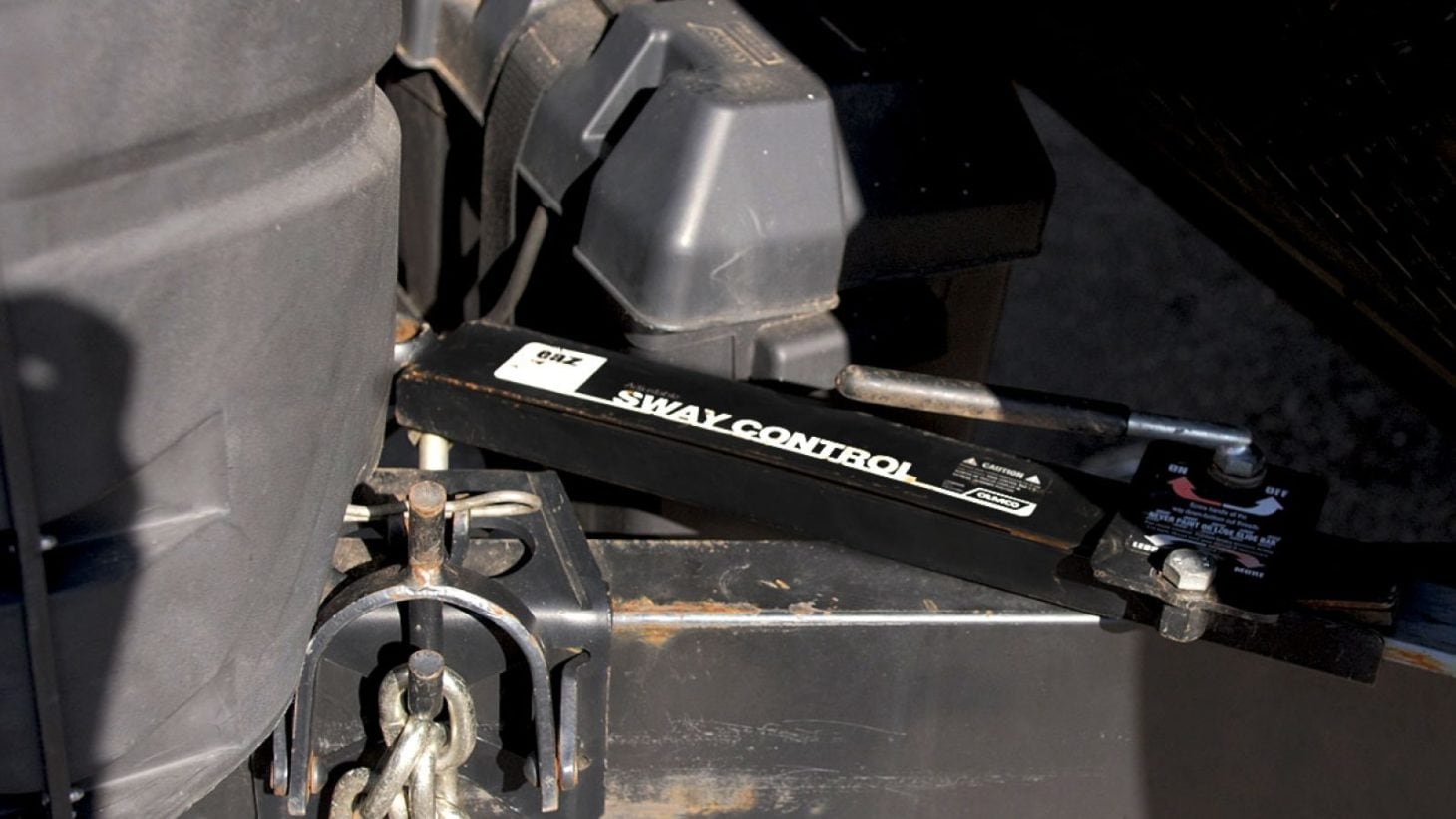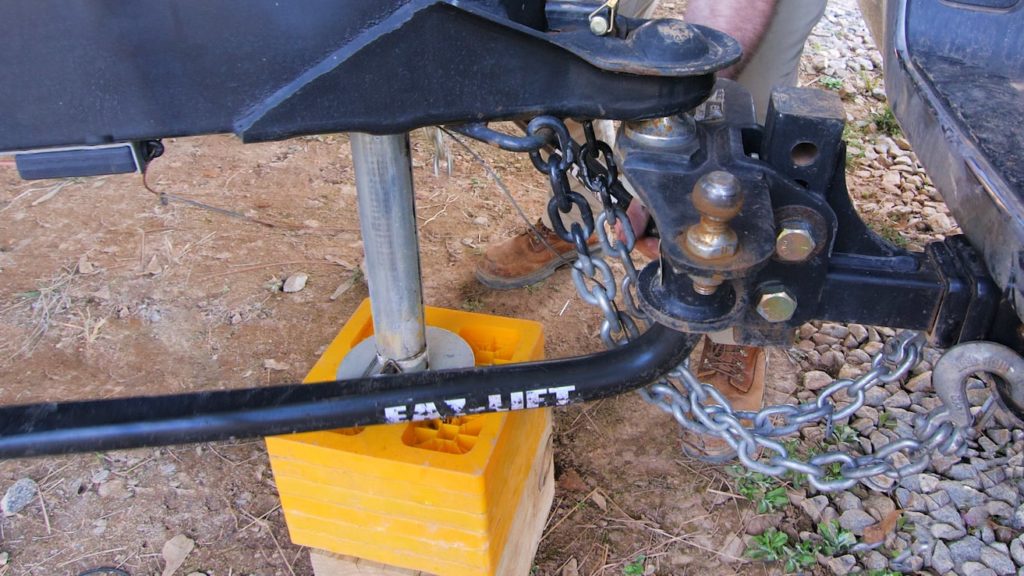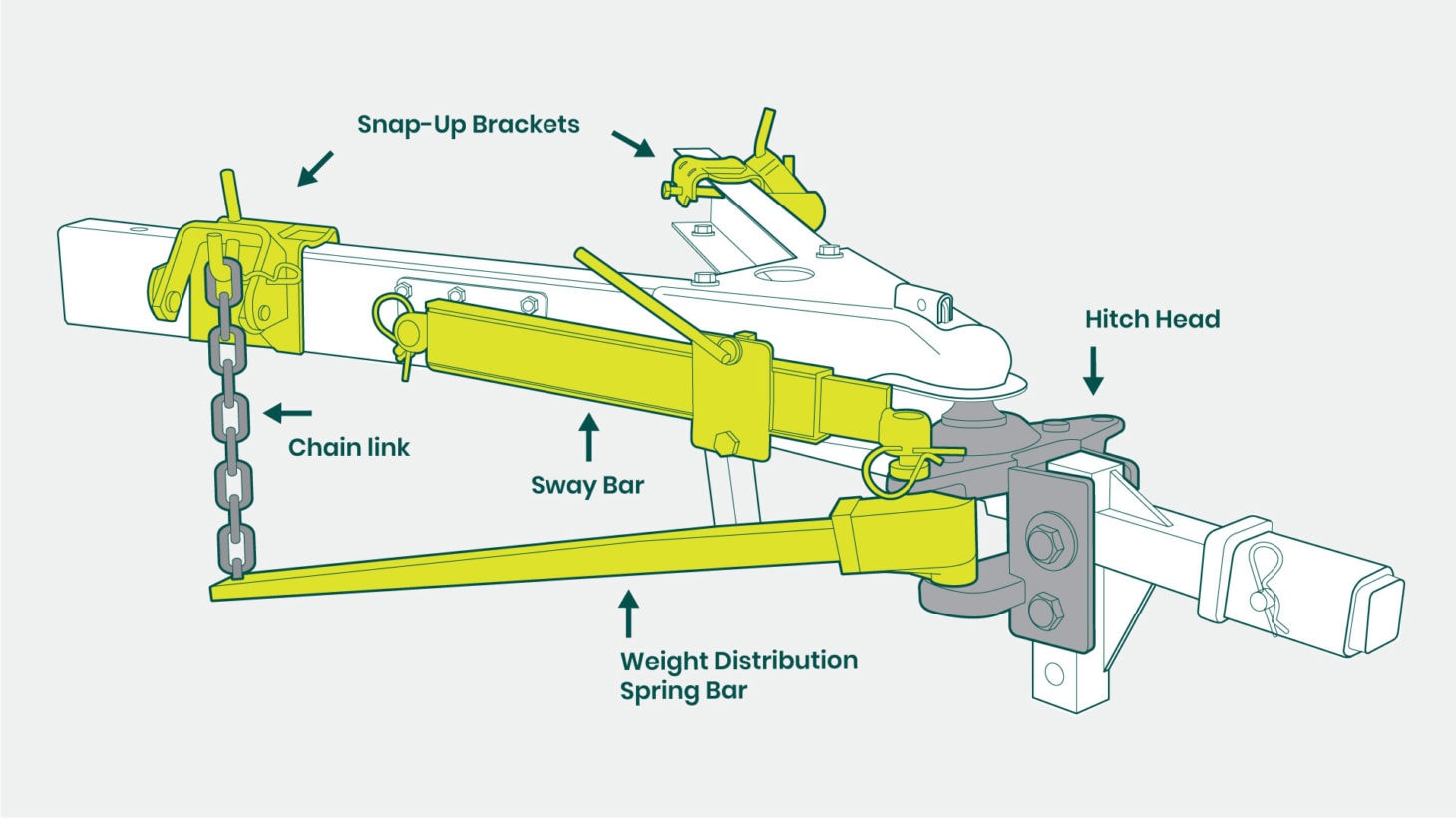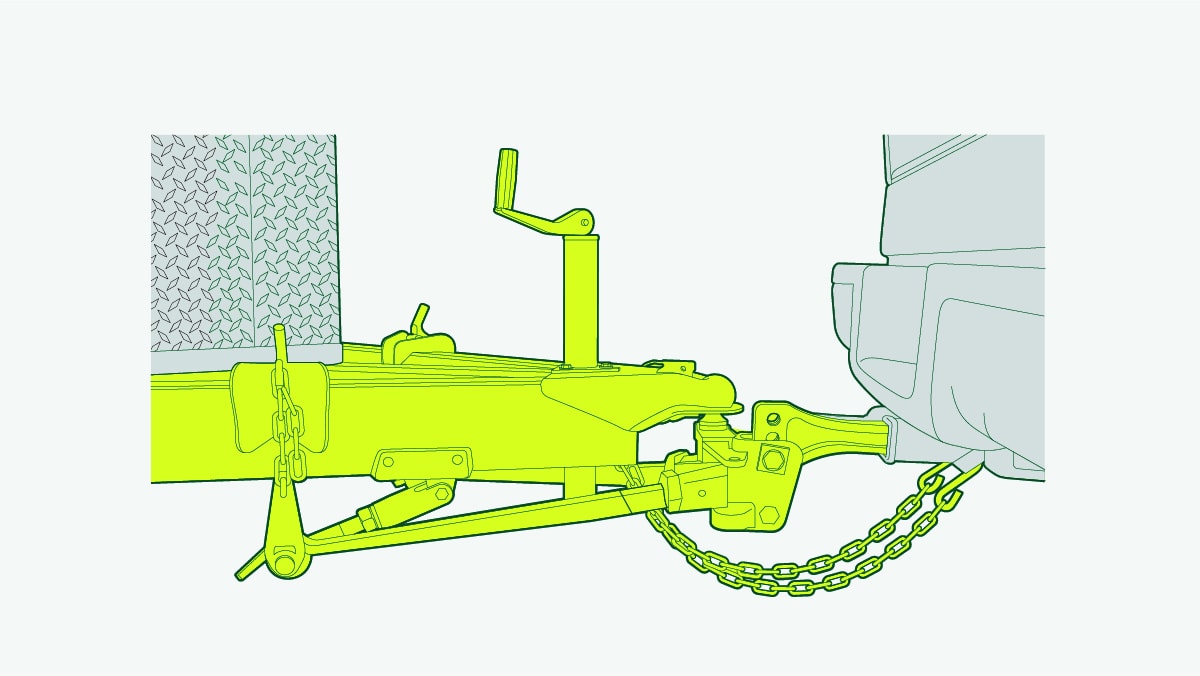When it comes to RVing, sway is best saved for the hammock. Feeling your travel trailer sway from a gust of wind is scary, but there are products and strategies that can help reduce sway and keep your RV aligned.
What Causes Sway?
The most common causes of sway are gusts of wind, drafts from passing semi-trucks, turns on curvy roads, and imbalanced loads in the trailer. Even a small amount of sway can be exhausting for a driver, forcing constant steering adjustments. Weight distribution and sway prevention systems make for a safer and smoother ride.

How Can I Prevent Sway?
There are a few simple, practical things you can do to reduce the risk of sway.
- Pay attention to weather conditions. If it’s very windy, it may not be a good day to travel.
- Consider your load distribution. Distribute the weight in your RV evenly from front to back and side to side. Move heavier items to the front if needed. A good rule of thumb is 60 percent to the front, 40 percent to the back. Take into account things like slide-outs and appliances, and make sure you compensate by putting heavier items on the opposite side while packing.
- Check the weight of your loaded RV at a local scale and move gear around as needed. Make sure you don’t exceed the GVWR or GAWR and test after adding propane or water you plan to use during travel.

How Do Weight Distribution Systems and Sway Control Bars Help?
Weight distribution systems distribute a portion of the trailer’s tongue weight from the back of the tow vehicle to the front. This allows the tow vehicle to ride more level and have more control because the proper weight will be on the steering tires. Sway controls use a friction type device to prevent the trailer from easily swaying from side to side. There are several common types that all work a bit differently and come at varying price points. Trailer weight distribution systems and sway control bars can be separate components, or in some cases, the sway control device can be built into the weight distribution system. Make sure any weight distribution or sway control setup you purchase is rated to your towing weight and your tongue weight.

Weight Distribution System
You should use a weight distribution system if your travel trailer is at least 50 percent as heavy as your towing vehicle, or the rear of your tow vehicle sags when the trailer is hooked up. A typical weight distribution system uses spring bars attached to the hitch to distribute the load evenly between the axles on the tow vehicle. The result is a smoother and more level driving experience. Popular brands include Reese, CURT, and Camco.
Another type of weight distribution system uses a built-in sway control feature that adds additional sway protection without adding a separate friction control device. These are generally a little more expensive but can save hook-up time and storage space when not in use. Popular brands include Equal-i-zer, Blue Ox SwayPro, Husky Towing Center Line.
Average Cost: $300 to $700
Dual Cam Sway Control System
A dual cam sway control system is useful for large trailers. It attaches near the hitch and hooks onto either side of the trailer. The cams prevent sway but unlock when the trailer needs to turn.
Average Cost: $300 to $500

Friction Sway Control Bars
Friction sway control bars can be added to any hitch, and use friction to prevent the towed vehicle from swaying and bring it back into alignment. They come in a right-hand or left-hand application and one or both can be used for additional sway protection. Friction sway control bars are cost-effective but interfere with the trailer’s ability to turn, so they need to be removed when backing up or driving in slick conditions. This type of sway control is most useful for smaller towing situations as opposed to longer trailers.
Average Cost: $50 to $75
Electronic Tow Control
If you do start to sway when towing your travel trailer, it’s useful to have a device that electronically monitors forces on your trailer. When sway is detected, it pulses your trailer brakes automatically to keep the trailer tracking straight. This can be used in addition to other weight distribution and sway control systems.
Average Cost: $400 to $500
What If I Start to Sway?
Even with the best sway bars, stabilizers, and careful packing, you’re bound to encounter sway. Don’t panic.
- Slow and steady steering will help straighten your trailer and tow vehicle.
- Don’t attempt to counter-steer, as this can cause the sway to get worse and make you lose control.
- Don’t brake the towing vehicle. Instead, brake the towed RV very slowly, using your auxiliary brake’s manual override.
- You can use an electronic tow control monitor which automatically brakes the towed vehicle with the proper amount to stop sway.
By choosing the right weight distribution or sway bar system for your trailer—and taking steps to prevent sway before you leave home—you’ll be on track for a great trip.
This article has links to products that were carefully selected by our editors. We may earn commission on your purchases from these links. Visit this page for the full details of our affiliate marketing policy.